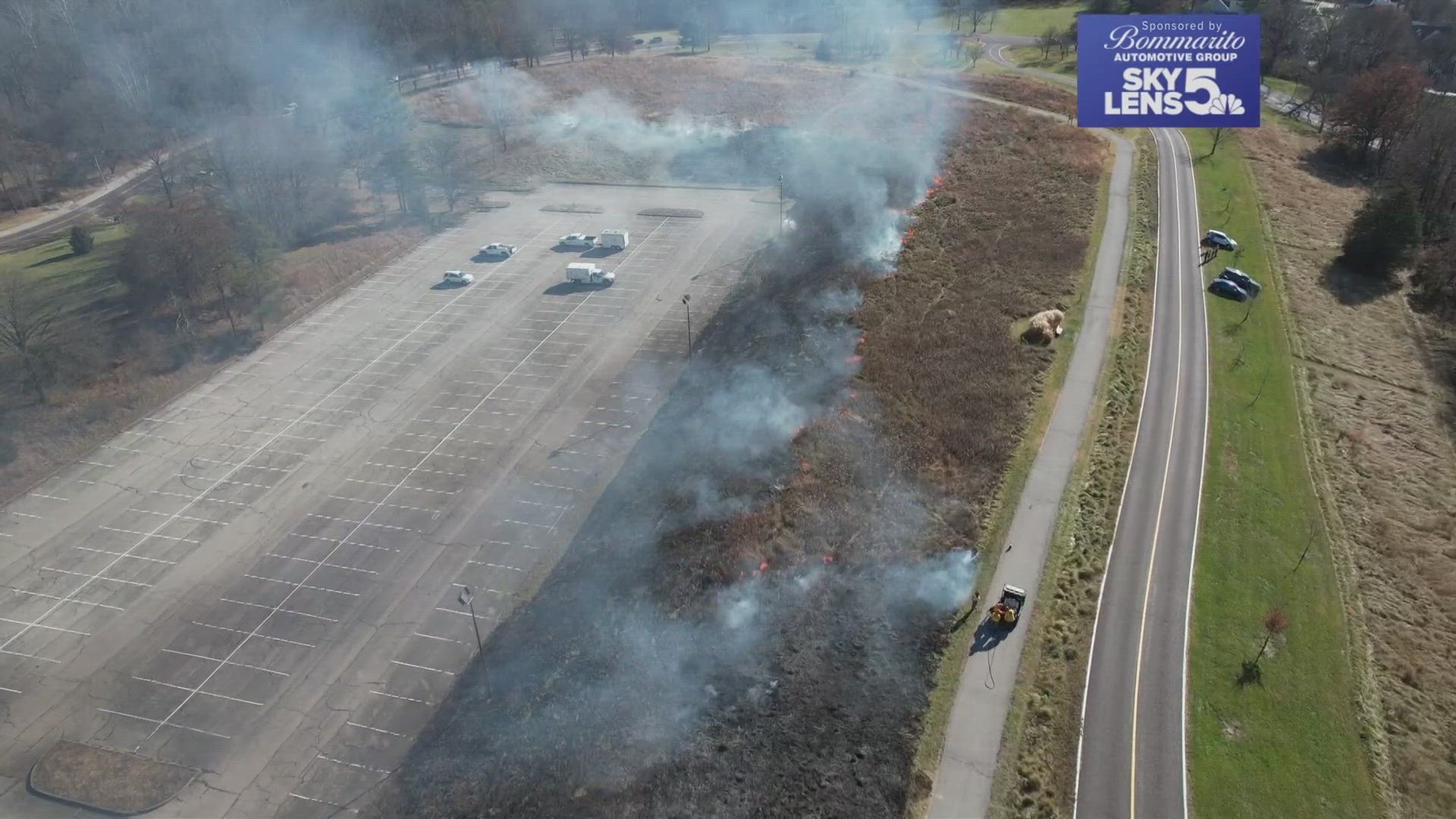ST. LOUIS COUNTY, Mo. — Dry, dormant grass is a "burn boss'" dream.
"The fuels are dry," Jason Pratt, "burn boss" and St. Louis County Parks Forestry manager, said. "These are considered one-hour fuels. One hour fuels are very small, normally your grasses and that's what helped the fire."
After taking current weather conditions with manual and electronic instruments, Pratt and the National Weather Service deemed it safe to burn.
"Everything is weather-dependable," Pratt said. "We have to be fluid with how I manage the fire."
Meteorologists cannot control the weather but can give it a grade.
"I would give the grade for the day a B+," Matt Beitscher, St. Louis National Weather Service meteorologist, said. "The only thing that we were missing (Thursday) is really deep mixing.
"We don't want that smoke to be near the surface. We want it to be up, away from people, away from cars, away from buildings," he added. "This time of year, it's kind of tough to get that, but with a warm day we had (Thursday). It was just enough that we were able to get that smoke out of here."
As expected, the grass went up in flames rapidly. The dry fuels did not put off considerable heat and did not put out an offensive smell.
"The weather was as forecasted and the fire behavior was stable and it did go to plan," Pratt said.
"But why burn at all?" 5 On Your Side asked.
"We've noticed that some of the invasive species, such as Bradford pear are starting to come back in," Pratt said. "This unit has not been burnt in some time and fire is going to kill those and set those invasive species out."
The goal is to restore the prairie to pre-European settlement times. The 7 acres by the Greensfelder Recreation Complex in Queeny Park are currently burnt, but Pratt added not for long.
"In March and April this will be full of native grasses," he said.

